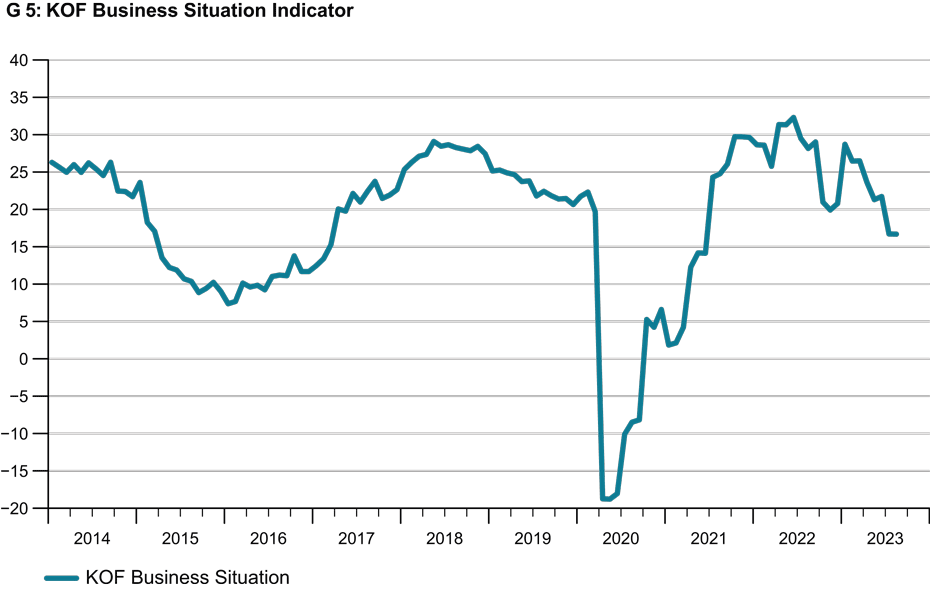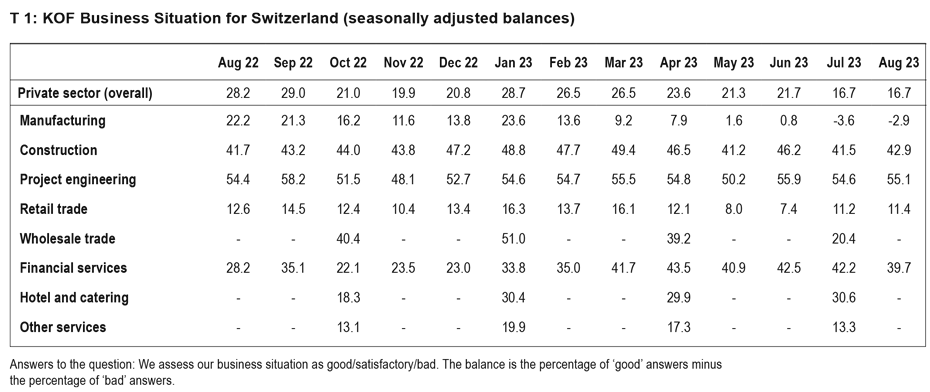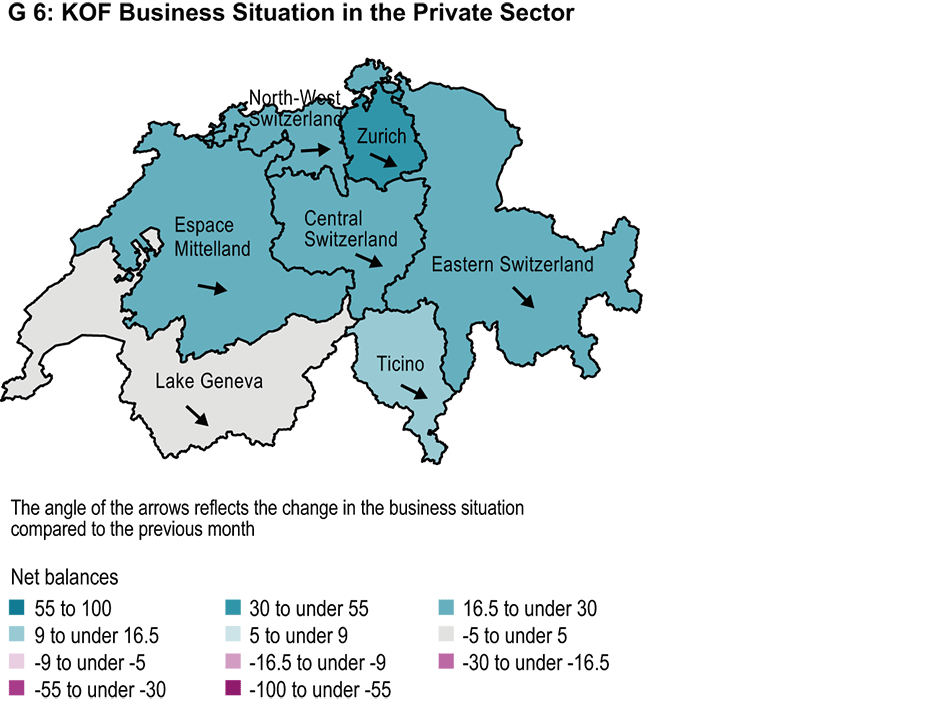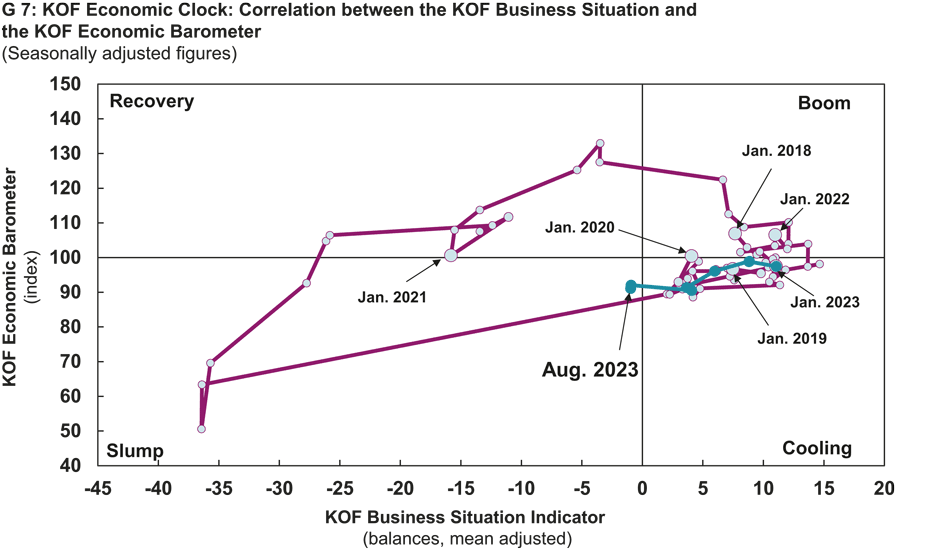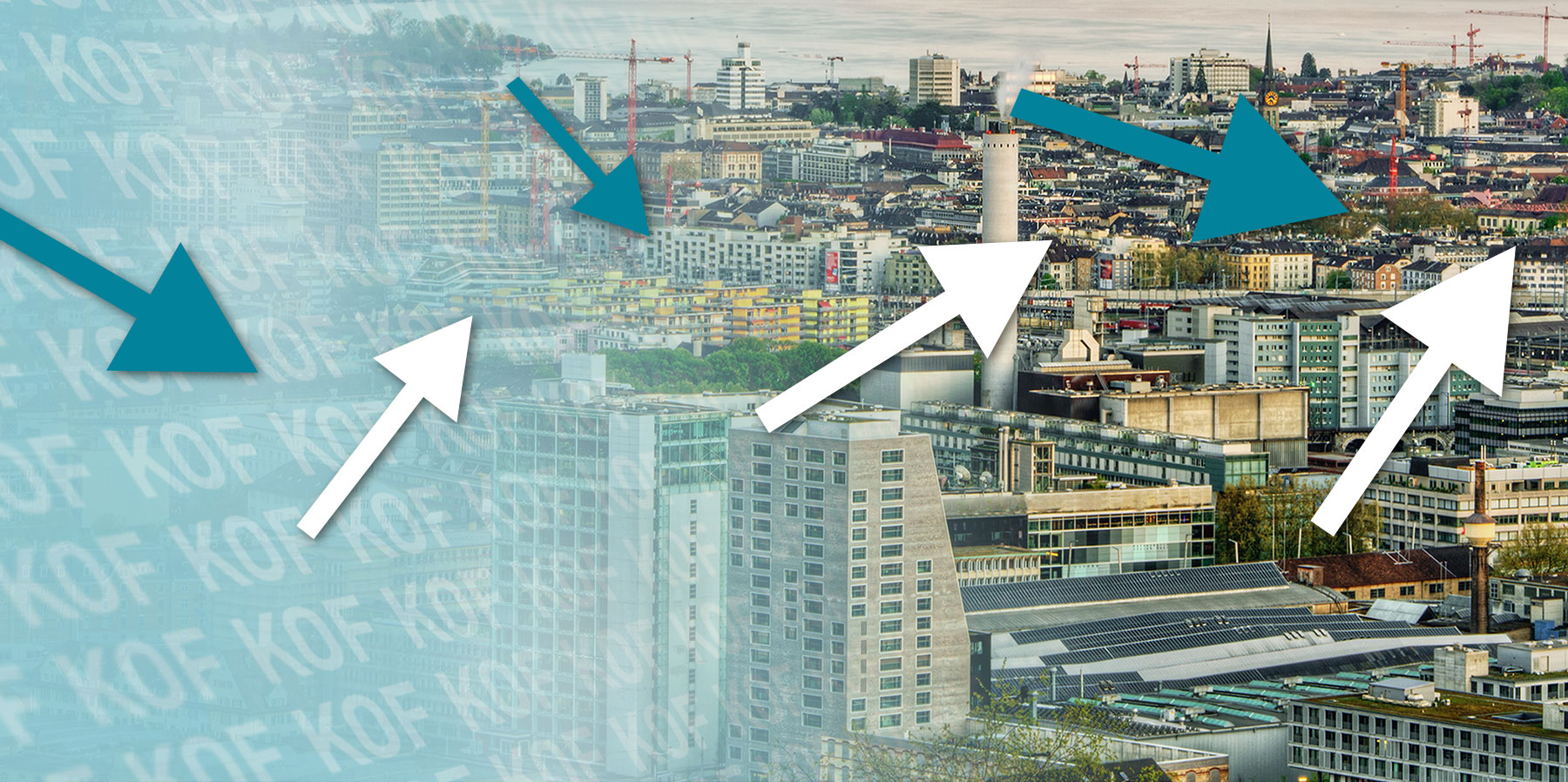
KOF Business Situation unchanged
The KOF Business Situation Indicator for the Swiss private sector pauses in August (see Chart G 5). After a sharp decline in the previous month, it does not fall further. Expectations for further business development remain rather subdued. The Swiss economy is developing sluggishly.
In the manufacturing sector, the business situation indicator remained negative in August. At least it did not fall again after six consecutive declines. The domestic-oriented firms are responsible for the breather. The business situation indicator for export-oriented firms is still in free fall. Overall, the order backlog is falling and companies are becoming more cautious in their production planning. Since companies have more than enough intermediate products in stock, they again intend to purchase such products more cautiously. This then leads to lower demand from upstream production companies.
In the construction industry, the business situation indicator can only make up for the decline in the previous month a little, in the project planning sector almost completely. In the construction industry - especially in the finishing trade sub-sector - planning again provides for increased production expansions. In retail trade, the business situation is almost stable. In the financial and insurance services sector, the business situation is cooling slightly (see table T 1).
With the exception of Northwestern Switzerland, the business situation is cooling in all other FSO regions - most strongly in Eastern Switzerland and the Lake Geneva region, followed by Ticino, the Zurich region, Central Switzerland and the Espace Mittelland (see Chart G 6).
The KOF Business Situation highlights the current economic situation of companies. The KOF Business Cycle Barometer, on the other hand, is an indicator of the economic outlook. The economic clock shows that 2022 brought a continuation of the pandemic recovery in the first months. From summer onwards, however, the economy cooled down noticeably. At the beginning of 2023, the economy stabilises temporarily, while in the summer of 2023 it is again in the cooling phase (see Chart G 7).
Explanation:
Chart G 5 shows the KOF business situation across all economic sectors included in the survey. For economic sectors that are only surveyed quarterly, the business situation is kept constant in the intermediate months.
Chart G 6 shows the business situation in the major regions according to the Federal Statistical Office. The regions are coloured differently depending on the business situation. The arrows within the regions indicate the change in the situation compared to the previous month. An upward-pointing arrow indicates that the situation has improved compared to the previous month.
In the KOF Business Cycle Clock (Chart G 7), the business situation indicator is plotted against the KOF Business Cycle Barometer. The business situation indicator reflects the current economic situation, while the barometer is a leading indicator of changes in activity. The barometer can be divided into quadrants: During the recovery phase, the business situation is below average, but growth prospects are above average. During the cyclical peak, the situation and prospects are above average. During the cooling phase, the situation is above average and the prospects are below average. In the economic trough, the situation and prospects are below average. Ideally, the graph runs through the quadrants clockwise.
The KOF Business Situation is based on more than 4,500 reports from companies in Switzerland. Companies in the economic sectors of industry, retail trade, construction, project planning and financial and insurance services are surveyed monthly. Companies in the hotel and restaurant industry, wholesale trade and other services are surveyed quarterly, in the first month of each quarter. Among other things, the companies are asked to assess their current business situation. They can mark their situation as "good", "satisfactory" or "poor". The balance value of the current business situation is the difference between the percentages of the answers "good" and "poor".
More information on the KOF business surveys can be found on our website: https://kof.ethz.ch/en/surveys.html
Contact
KOF Konjunkturforschungsstelle
Leonhardstrasse 21
8092
Zürich
Switzerland

